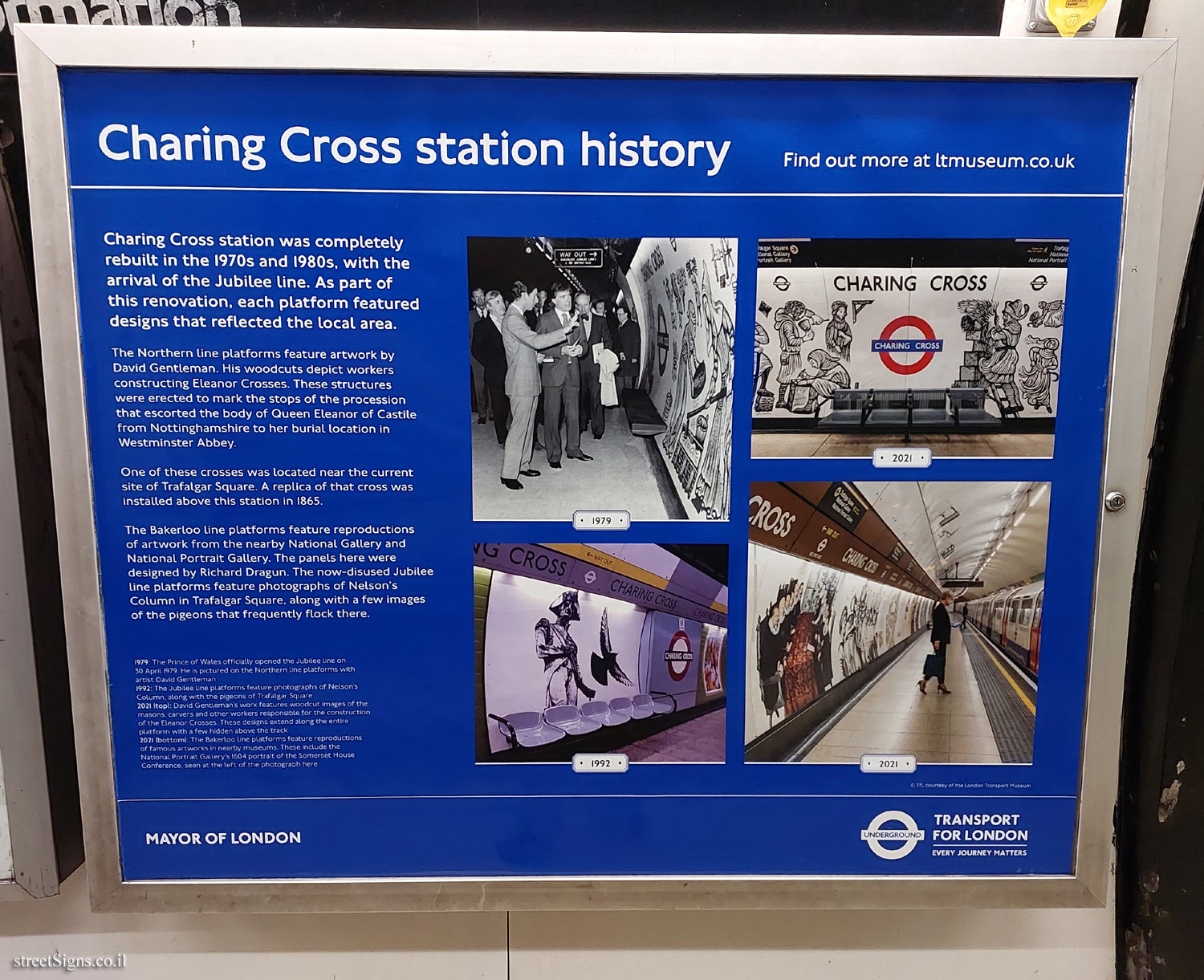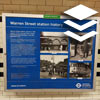LONDON UNDERGROUND HISTORY
Charing Cross station history Find out more at
www.ltmuseum.co.uk The Underground has been calling at this site since the early 1900s - although the current configuration of the station didn’t appear until decades later.
’Trafalgar Square’ station opened in March 1906, as part of the Baker Street and Waterloo Railway - now known as the Bakerloo line. In June of the following year, the Charing Cross, Euston and Hampstead Railway - a forerunner of today’s Northern line - opened a separate ’Charing Cross’ Tube station by the Strand. That station was renamed ’Strand’ in 1915.
In the 1970s, the creation of the Jubilee line provided an opportunity to bring the separate Bakerloo and Northern line stations into a single connected entity. Charing Cross was scheduled to be the terminus point of the new line, and the unified station opened in 1979.
The Jubilee line platforms at Charing Cross closed in 1999 as the line was extended through Westminster station and on to Stratford.
In a typical year, more than 19 million journeys start or end at Charing Cross station, in addition to the transfers made between lines.
[Images]
1914: This view of the station shows the original wrought-iron entrance by Trafalgar Square
1958: Customers stand outside the entrance to the station along the Strand. The sign above the door indicates that it is the way to get to the Northern Line. Next to the entrance are wetpost advertising boards featuring a Tube map. These are illuminated by swan-neck lamps
1973: Fixed-value machines were used at the Trafalgar Square entrance to the station
c.1980: A Jubilee line train heading to Stanmore on the now disused platform at Charing Cross. These platforms are now used as sets and backdrops for films and photo shoots
MAYOR OF LONDON
Logo of the Underground
TRANSPORT FOR LONDON - EVERY JOURNEY MATTERS
© TFL courtesy of the London Transport Museum


 Click for sign's details
Click for sign's details  Click for all signs belonging to London Underground History
Click for all signs belonging to London Underground History
 619 Meter |
619 Meter |  854 Meter |
854 Meter |  1.34 Km |
1.34 Km |  1.47 Km |
1.47 Km |  1.99 Km
1.99 Km